Search
forLearn
5 / 47 resultslearn Minoxidil
An essential vasodilator with some anti-androgenic effects, has excellent safety record
learn Overview
learn Thymosin Beta 4
learn HMI-115
much-hyped research compound targeting prolactin receptor in scalp
Research
5 / 1000+ results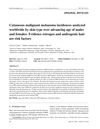
research Cutaneous Malignant Melanoma Incidences Analyzed Worldwide by Skin Type Over Advancing Age of Males and Females: Evidence Estrogen and Androgenic Hair Are Risk Factors
Estrogen and androgenic hair increase melanoma risk, especially in European-ancestry individuals.
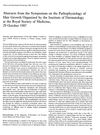
research Abstracts from the Symposium on the Pathophysiology of Hair Growth Organized by the Institute of Dermatology at the Royal Society of Medicine, 29 October 1987
The symposium concluded that hair growth involves complex processes, including the hair follicle life cycle, the role of the dermal papilla, hair strength, pigmentation, and the impact of diseases and treatments like minoxidil on hair and skin.
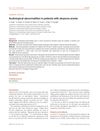
research Audiological Abnormalities in Patients with Alopecia Areata
People with alopecia areata may be more likely to have a certain type of hearing loss.
research SnapshotDx Quiz: May 2022
Androgenetic alopecia causes hair thinning due to increased androgen activity, treatable with minoxidil and finasteride.
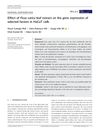
research Effect of Ficus Carica Leaf Extract on the Gene Expression of Selected Factors in HaCaT Cells
Ficus carica leaf extract may help treat skin disorders by reducing inflammation and androgen effects in skin cells.
Community Join
5 / 1000+ resultscommunity How all hormones affect our hair follicles. Not just DHT. Take a look at this paper. Prolactin, melatonin, cortisol, progesterone, testosterone and more
The conversation discusses various factors affecting hair loss, not just DHT, and mentions treatments like Minoxidil, finasteride, and melatonin. Some users report personal experiences with these treatments and hormone tests, while others speculate on the role of hormones like prolactin and cortisol in hair loss.
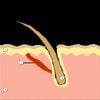
community Physio-metabolic method of treating androgenic alopecia. Cold receptors. The relationship between DHT, cold receptors, minoxidil and antiandrogens
Treating androgenic alopecia with minoxidil, finasteride, and antiandrogens, alongside exercise, cryotherapy, and natural substances to stimulate cold receptors for better hair growth. The method focuses on enhancing treatment effectiveness by considering environmental and behavioral factors and the role of cold receptors and muscle stress.
community My Theory Of Androgenic Alopecia
Hair loss is linked to cellular physiology and the IGF-1 to TGF-B1 ratio, not just androgen sensitivity. The theory lacks evidence, while finasteride and minoxidil are effective treatments.
community Physio-metabolic method of treating androgenic alopecia. Cold receptors. The relationship between DHT, cold receptors, minoxidil and antiandrogens.
A method for treating androgenic alopecia using minoxidil, antiandrogens, exercise, and cold exposure to promote hair growth. Environmental factors and lifestyle changes, like diet and exercise, can improve treatment effectiveness.
community Evidenced Based Meta-Analyses and Systemic Reviews of Androgenic Alopecia and Treatments
Evidence-based treatments for androgenic alopecia, such as minoxidil, finasteride, low-level laser light therapy, dutasteride, platelet-rich plasma, and topical ketoconazole. It discusses the efficacy, safety, and mechanism of action of these treatments, as well as future developments in understanding this polygenic condition.